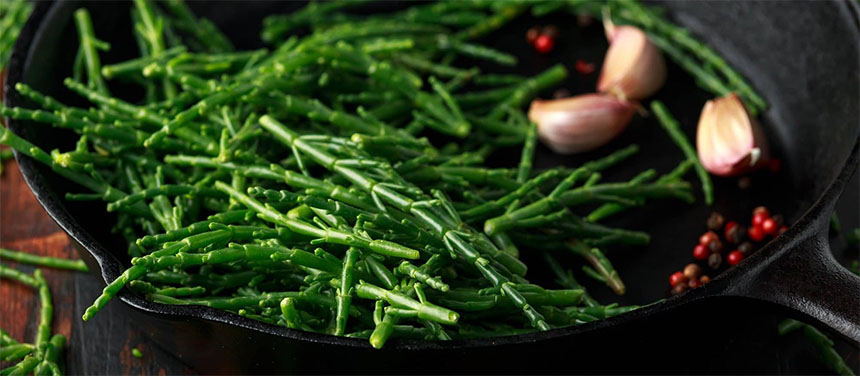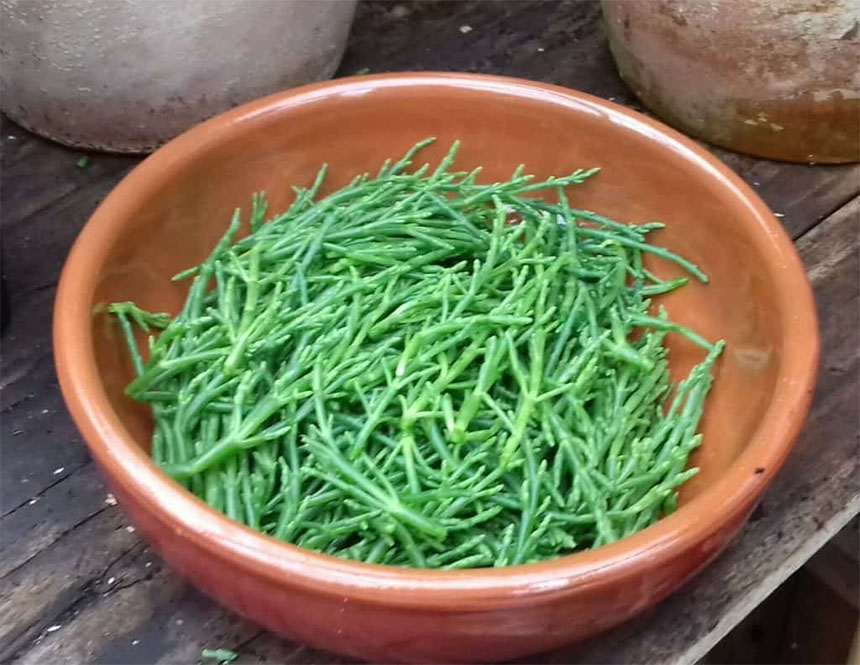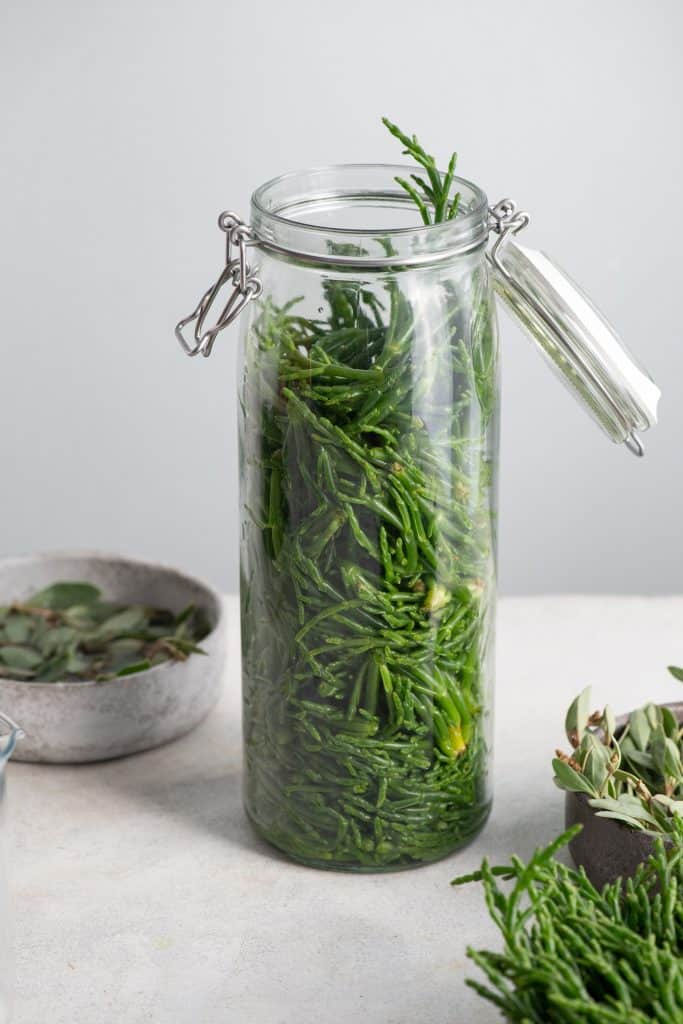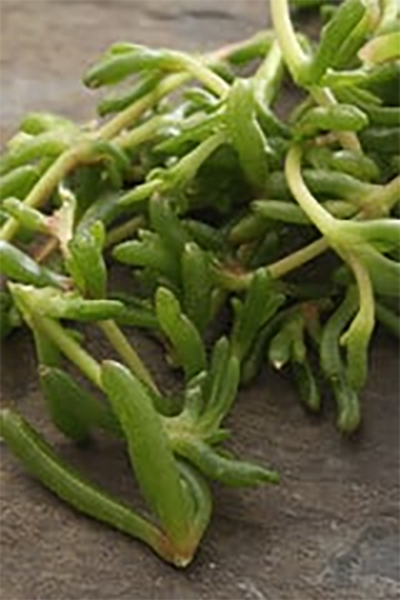|
Growing Samphire by Tom Hall-Martell
Samphire (Salicornia Europaea) is one of the on trend vegetables these days being featured on fine dining menus and heralded by Chef’s and on television on Masterchef and the Great British Menu.
Growing wild on salt water estuaries it is only available for a few weeks of the year and harvesting is by foraging and its collection highly regulated. Commercial production appears to be from Israel and Morocco or foraged in the UK and supply is unreliable.
Due to our love of cooking and growing and the regular unavailability along with reducing the air miles and carbon footprint I decided it must be possible to grow. Here I share my experiences of growing samphire over the past 3 years in a cold greenhouse in inland Somerset.
Growing from seed
Seeds are available from DT Brown and Sarah Raven. I tried for two years to germinate with none or limited success. What I did learn was that to germinate successfully the compost needs to be treated beforehand with the watering mix used all year round.
This is per 5 litres of tap water or water butt water
6 teaspoons of sea salt (not table salt)
1 capful 15ml of seaweed extract
Sow from the beginning of April into the treated compost. Germination is slow and plants take up to 3-4 months to the first cutting. I have transplanted successfully into both plastic and terracotta pots but wait until seedlings are at least 2cm high otherwise they will have very little root. My experience of seed grown plants is that they will generally run to seed in Autumn. Therefore at Somerset Samphire we only grow our plants from cuttings as these will overwinter with some protection
Growing from Cuttings
I discovered in year 2 that I could successfully root cuttings in the watering mixture in jam jars. However this took a few weeks and I could only root 8-10 at a time. Earlier this year I purchased the 40 cell hydropod with heating from greenhouse sensation. I found on average I could root 30 out of 40 cuttings in two weeks with strong root growth. These were potted into either 9cm 1 plant or 13cm pots 3 plants in either terracotta or plastic both grew equally well with the first cutting after 8-10 weeks.
Growing On
I have grown plants on happily in normal multipurpose compost and have used a number of brands with equal success. Plastic, terracotta and a polystyrene box have all proved to be good. Terracotta dries out quickly but retains the salt so is a good choice. Pest and disease is non-existent as the salt deters the predators.
Check watering daily and always use the watering solution of sea salt and seaweed extract. Watering is fine from both above and below but always keep moist.
Harvesting
From my initial stocks of overwintered plants and new plants purchased in early March and supplemented with seedlings we have been self-sufficient in Samphire from mid April until November. My view is the ultimate cut and come again crop as if you cut weekly plants will not start running to seed until late October. Regular cutting also ensure that stems stay sweet and juicy and not woody.
Overwintering and running to seed
Seed raised plants will run to seed from late October and this is fine leave them in their original pots with foliage intact until early spring. Then shake the remaining stems to make sure all seed is released and keep moist from early March with the watering mixture.
Cutting raised plants will not run to seed and will happily overwinter in a cold greenhouse to give early harvests from next spring.
Culinary uses and cooking
Samphire is the perfect accompaniment to all fish and Seafood dishes. The salty flavour is delicious. To cook steam or blanch for a few minutes or saute in butter. Serve immediately and don’t add any additional salt to the water
|
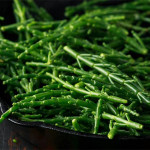
 PAGE Q.R. CODE
PAGE Q.R. CODE
